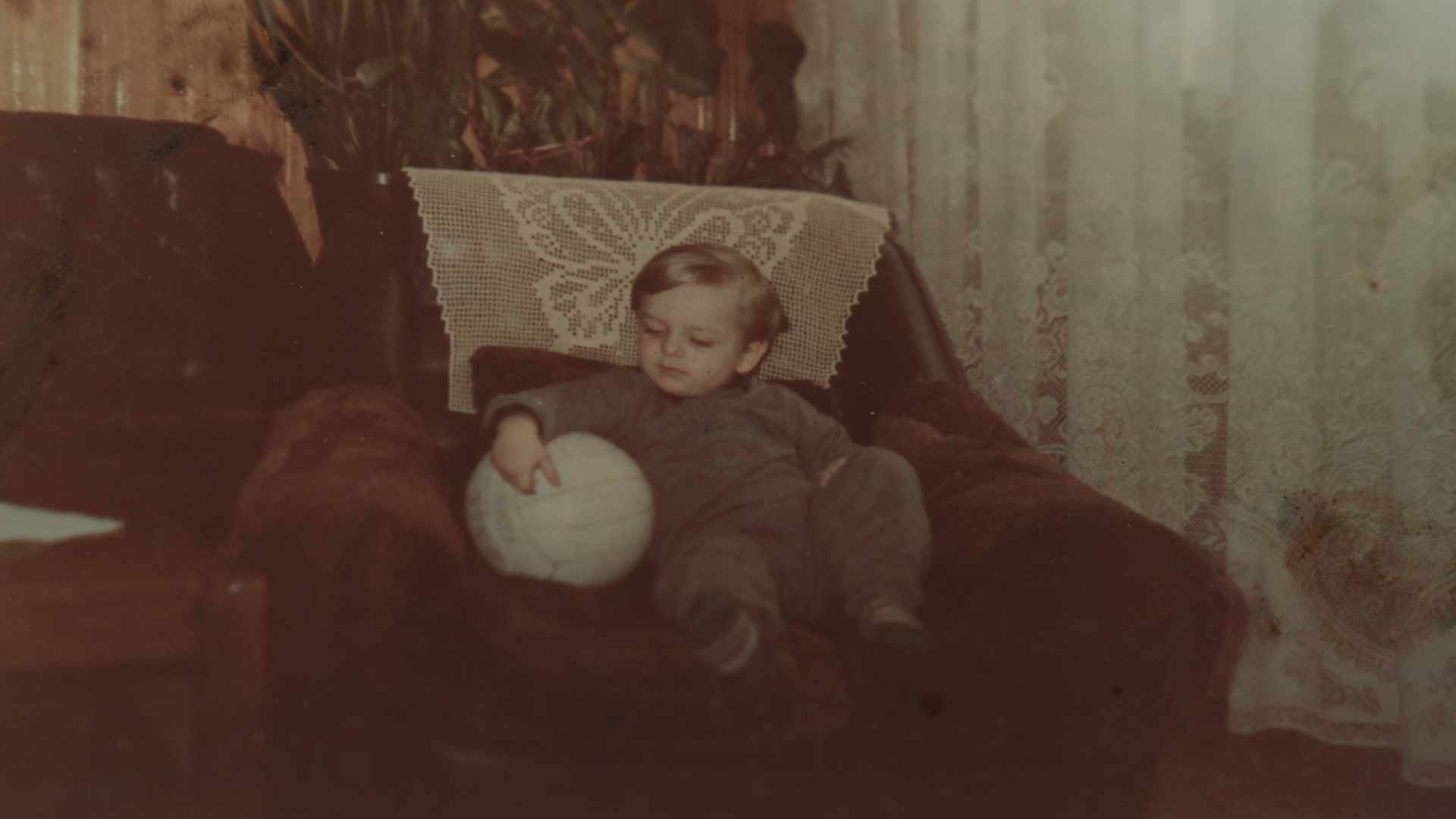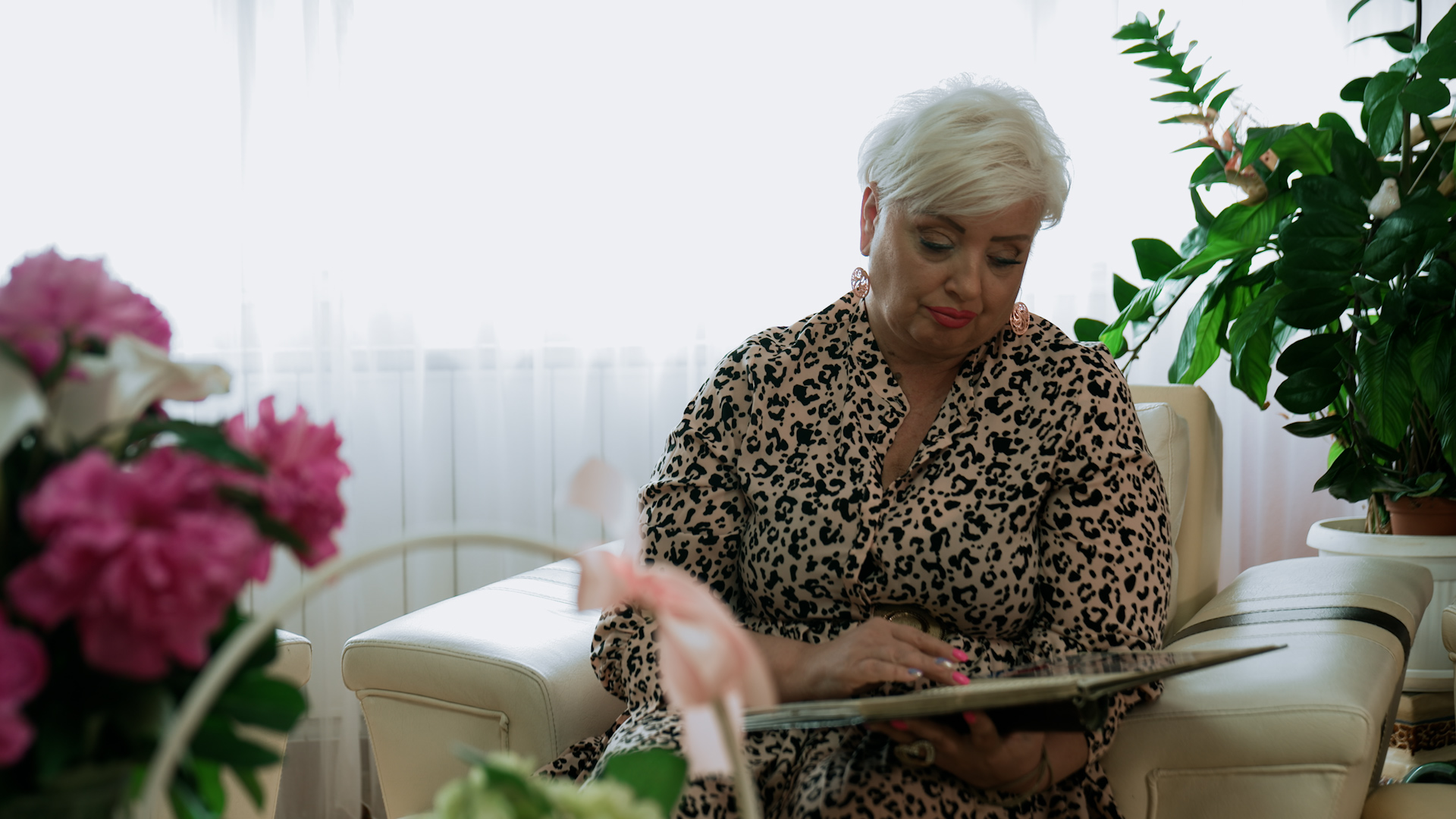This post is also available in: Bosnian
“Over these 30 years, I’ve tried to somehow diminish the memories as much as I can. It’s painful, it’s terrible, and I somehow found my own way to make it easier – sometimes I succeed, sometimes I don’t,” she said.
Sandro was two-and-a-half when he was killed. His mother remembers him as a gentle boy. Because of the war, they were constantly together.
“I spent 24 hours with Sandro, so I somehow feel that peace, that we were fully connected and that we gave each other what we could give. He was a sweet blonde boy with blue eyes, full of love and attention and generally a good child,” she recalled.
On his lats birthday in December 1994, Sandro received a battery-powered motorcycle.
“Then we would move the carpet and constantly ride on that motorcycle. He would say to me, ‘Come on Mum, sit on it.’ And we rode all around the whole of that hallway with that motorcycle, and it’s such a fond memory of what he and I used to do,” Mujacic said.
A shell fired on Tuzla’s Kapija district on May 25, 1995 from Bosnian Serb Army positions killed 71 people and wounded more than 150 others who had gathered to celebrate Youth Day, a Yugoslav-era public holiday. The average age of the victims was 24. One of them was young Sandro.
A drop of blood

Sandro Kalesic. Photo: Detektor from the family album
May 1995 was a rainy month, up until the 25th, when a sunny day dawned, and Irena Mujacic, together with Sandro and her then husband Dino, went out to the Kapija district of the city to say goodbye to a mutual friend who was leaving Tuzla that evening.
“Sandro was sitting on my lap, and then he asked me to sit on a chair so that he could also be a grown-up. Then a shell dropped and caused so much darkness and dust that I was not aware of what was happening, because everything that was happening, it happened behind my back,” Mujacic said.
“At one point, I took Sandro’s hand and led him into a room. Then Dino took him and we found that there was a drop of blood on his chest.”
The drop of blood, which Sandro’s mother describes as being like a grain of rice, was caused by a piece of shrapnel.
“That shrapnel hit Sandro directly in the heart. I don’t even know how we got to the hospital, walking over the wounded in that madness,” she said.
The hospital was full of bloody, inured people; a scene of chaos and horror. Sitting on a bench, Mujacic and her husband waited for news of her injured son.
“We went in two or three times, asking what was happening to Sandro. In the end, Dino came out and told me that they weren’t able to save Sandro.”
A last farewell
The day before the funeral for the massacre victims, which was organised at night due to the fear of another shelling, the parents of the murdered children received permission to see their loved ones’ bodies for the last time at the Tuzla Commemorative Centre.
“I was 24 years old at the time. I dreamed of going alone and saying goodbye in my own way. And Sandro, he was dressed in the clothes I brought him. And it was as if he was sleeping. We said goodbye, I kissed him and that was somehow it at that moment.,” said his mother.
The commander of the Bosnian Serb Army’s Ozren Tactical Group, Novak Djukic, was the only person convicted of bearing responsibility for the massacre in May 1995. The Bosnian court found that he ordered an artillery platoon to shell the city.
But Djukic has not served any of his 20-year sentence because he left Bosnia for neighbouring Serbia in 2014 and did not return.
The Bosnian authorities have repeatedly asked Serbia to take over the verdict and force the fugitive Djukic to serve the rest of his sentence there, but the Belgrade court has yet to issue any ruling. Hearings in the case have been repeatedly postponed.
Djukic remains a free man. The victims’ loved ones remain trapped with their memories.
“The fact that the man who was convicted is not in prison, but has escaped, is terrible for the parents of those who were killed,” Mujacic said.
“I don’t even think about it anymore and it means absolutely nothing to me, because I can’t bring Sandro back, and that’s the hardest thing for me.”
For decades, she and other family members have been visiting Sandro’s grave on Tuzla’s Alley of Youth every year on May 24, the day before the city mourns the massacre victims.
“I bring flowers then and arrange everything as I want. I want the 25th to dawn in the morning and everything to be as it should be,” she said.
“I’ve been trying to avoid going on the day of mourning all these years. I don’t like those crowds when I have to think about whether I’m going to show a certain emotion. That’s why I like to go the day before.”
Her son Sandro would now be 33 years old, if he had lived.
“He would have been a wonderful young man,” his mother said.
“He was a careful and gentle boy, and I know he would be the same now.”
